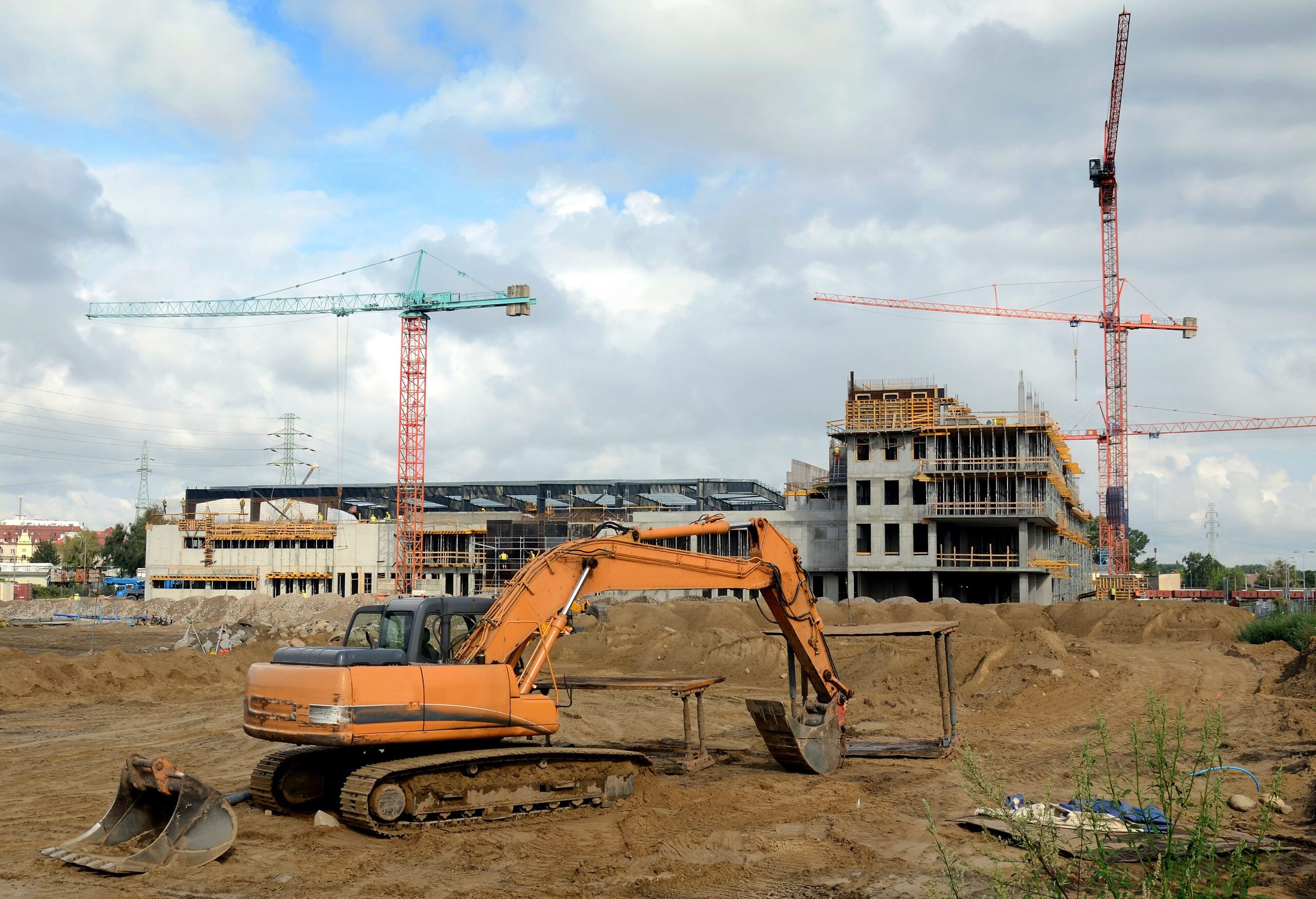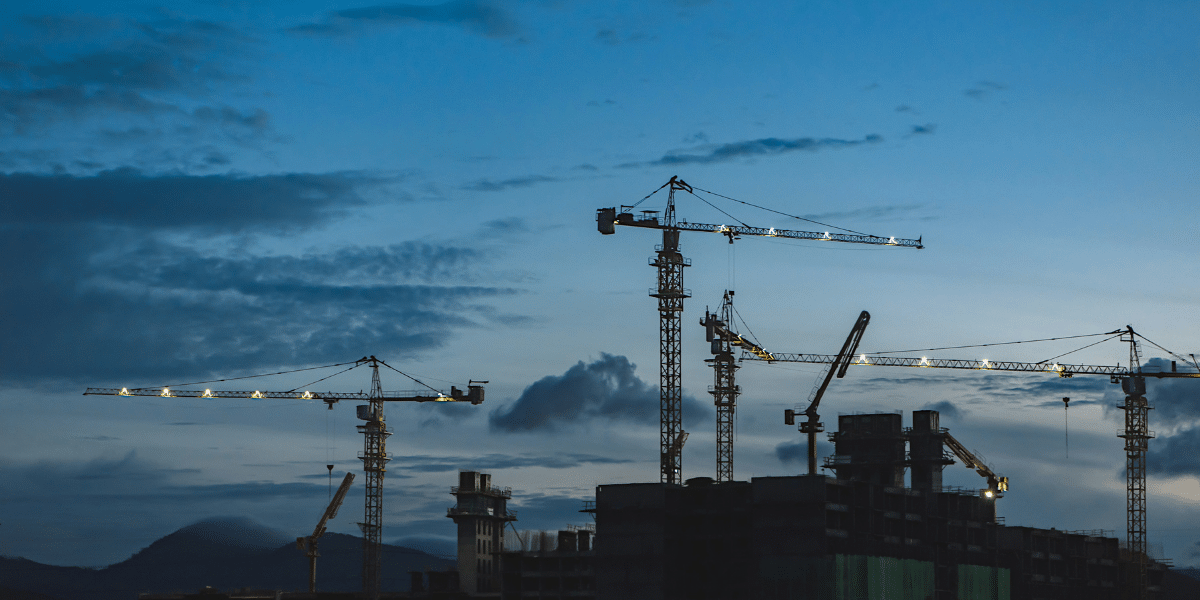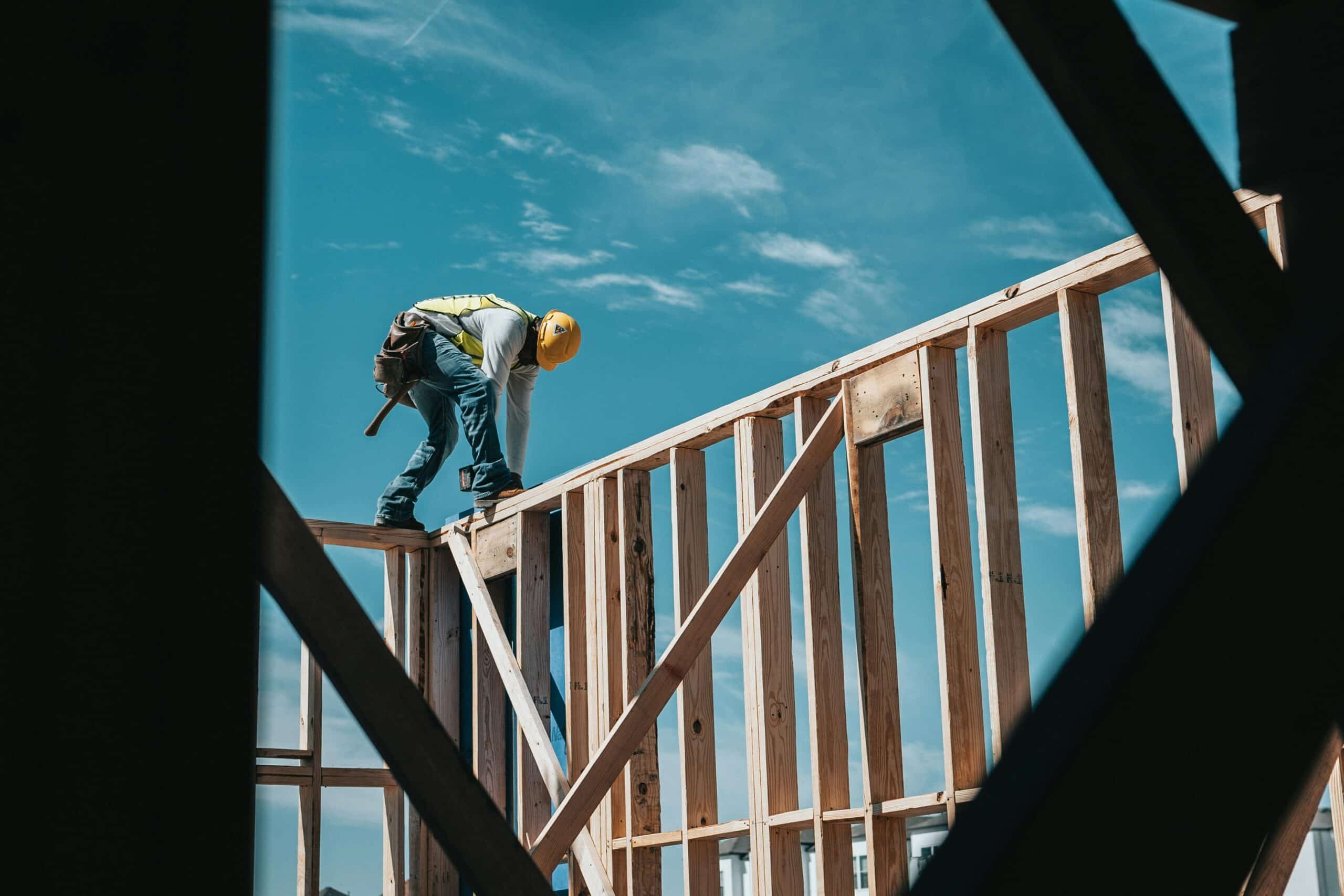Table of contents
Commercial construction loans are a great financing option for businesses looking to undertake a new construction project or renovate an existing property. They provide tailored funding and often come with flexible terms suited to the timelines of the project.
In addition, they give companies access to large funds that may otherwise be unavailable with other types of loans, and only interest is paid during the construction process, which eases cash flow.
In our previous articles, we talked about the requirements for commercial construction loans, as well as all the things you need to know when it comes to qualifying for this type of loan.
Our comprehensive guide will take you through the details of commercial construction loan interest rates, from the average rates that you can expect from lenders to the role that your credit score and financial history play in determining them.
How Do Commercial Construction Loans Work?
Before we discuss commercial construction loan interest rates further, it is important to understand how this type of loan works.
Unlike traditional commercial loans, in which the company gets a lump sum of money once the loan is approved, commercial construction loans work under a draw schedule, meaning that the money is disbursed in stages or “draws.”
In other words, the lender releases the financing upon the achievement of construction milestones or the completion of different construction phases.
This means that you don’t receive the next designated percentage of your funds until an inspection of the specific construction stage has been completed.
During the construction process, most lenders will let you pay only interest, which can lower your monthly payments and help you maintain a better cash flow for your business. The remainder of the balance is paid once the project is complete, but you can also opt for refinancing through “construction-to-permanent loans.”
How Much Do Commercial Construction Loans Cost?
Before applying for a commercial construction loan, keep in mind that lenders won’t finance 100% of your project. In most cases, financing will range from 60% to 90% of the project’s total cost, which includes land acquisition, construction expenses, permits, and fees.
This means that you will have to contribute a significant down payment, usually between 10% and 40% - the exact percentage will depend on multiple factors, including:
- Project type and complexity
- Loan-to-cost ratio (LTC)
- Your credit score and financial history
- The lender’s risk assessment
- Your equity in the project
- Current market conditions
- Property value and appraisal
- Regulatory requirements
Lenders like National Business Capital take all of these factors into account when determining the amount of down payment you will need to set aside for the loan.
In addition, keep in mind that your financial strength as a borrower also plays an important role - make sure that you have a good debt-to-income ratio (DTI), sufficient liquidity to cover down payments, interest payments, and other potential expenses, and a positive cash flow.
What Are The Current Loan Interest Rates For Construction Loans?
Commercial construction loan interest rates can fluctuate based on various factors like the central bank's policy, economic conditions, and the lending institution's policies, which means that there isn’t a fixed percentage that applies to all borrowers. In fact, they can range anywhere from 4% to 15% or even beyond.
As we mentioned earlier, the cost of construction business loans can end up increasing as a result of multiple variables, which can also include guarantee fees, processing fees, and project review fees - they are sometimes rolled into the loan.
How Are Construction Loan Interest Rates Determined?
The interest rates of commercial construction loans are determined by taking into account some of the following factors:
1. Market conditions
Broader economic trends tend to have an influence on the interest rates of construction loans. The policies of the Central Bank, like the federal funds rate in the US, set the baseline for lending rates.
When the market is experiencing economic growth, interest rates may increase as a way to control inflation. On the other hand, during periods of downturn, lenders may lower the rates in order to encourage borrowing and investment.
2. Project risk
Different types of construction projects come with different levels of risk for both the borrower and the lender. Factors such as the complexity of the project, the technical challenges, the location, the saturation of the market, and potential risks during the development phase may play a huge role.
For lenders, projects with higher risk mean that the borrower may not be able to complete the project on time (and within budget), and end up defaulting. Which, in turn, impacts the interest rates of commercial construction loans.
3. Creditworthiness
When you are applying for a commercial construction loan, the lender will evaluate your creditworthiness - aka how likely you are to pay back the loan based on your credit score and financial history.
Having a high credit score (680 or higher), a good Debt-to-Income Ratio (below 43%), as well as a proper amount of liquidity and cash reserves usually means that you are more creditworthy, which will have a positive impact on the interest rates.
4. Loan-to-Cost Ratio (LTC)
Another factor that plays an important role when it comes to interest rates of commercial construction loans is the Loan-to-Cost Ratio (LTC). It is the ratio of the loan amount to the total cost of the project, and it is expressed as a percentage.
If you contribute a larger portion of the project costs (which include land acquisition, construction costs, labor, materials, etc.), this reduces the risk for the lender, which means that you can benefit from lower interest rates.
How is the Loan-to-Cost Ratio calculated?
The Loan-to-Cost Ratio (LTC) is calculated by dividing the loan amount by the total cost of the project and then multiplying it by 100 to get a percentage. For example, if a loan amount is $800,000 and the total project cost is $1,000,000, the LTC would be 80% (800,000 / 1,000,000 x 100).
What are the most common LTC ratios for commercial construction loans?
The most common Loan-to-Cost (LTC) ratios for commercial construction loans typically range from 60% to 80%. This means lenders generally finance 60% to 80% of the total project cost, requiring the borrower to contribute the remaining 20% to 40% as equity.
5. Loan term
When it comes to calculating the interest rates of commercial construction loans, another factor that lenders take into account is the term of the loan.
Typically, short-term loans tend to have higher interest rates than long-term loans because the compressed time that the borrower has for repaying the loan increases the risk for the lender.
Most commercial construction loans are short term by nature, ranging from 12 to 36 months - which is usually the period during which the construction phase lasts. Since construction projects are associated with risks like potential delays or cost overruns, the higher risks and the shorter term influence the interest rates.
6. Type of location and project
The location and the type of the project also play a role in determining the commercial construction loan interest rates. For example, areas with strong economic growth, low unemployment, and high real estate demand typically offer lower interest rates than less-developed areas.
The strength of the local real estate market, the regulatory environment, and the type of the project are also factors that play an important role.
How Do My Credit Score And Financial History Affect The Interest Rate?
Your credit score and financial history directly influence the interest rate on a commercial construction loan. A high credit score and positive financial history indicate lower risk to lenders, often resulting in lower interest rates.
Conversely, lower scores suggest higher risk, leading to higher rates to compensate for potential default risk.
In addition, negative markers on your financial history (such as previous defaults, late payments, and bankruptcies) can also increase perceived risk, which causes interest rates to go up as a form of protection against defaulting.
Applying For a Commercial Construction Loan
If you are looking for the right lender for your commercial construction loan, look no further than National Business Capital. With $2+ billion financed since 2007, multiple awards, and an experienced team of financial advisors, we have everything you need to find the best financing options for your project.
Are you ready to get started? Apply here.






